Animals that start with X are often overlooked, yet they represent an interesting group of creatures from various habitats worldwide.
These animals showcase nature’s diversity and adaptability from prehistoric beasts to modern-day marvels.
This article will introduce you to over 30 animals whose names begin with X. We’ll explore their unique characteristics, habitats, and interesting facts that make each one special.
Get ready to find animals you may have never heard of, like the X-ray tetra, Xenopus, and Xoloitzcuintli.
You’ll learn about their roles in ecosystems and why some face challenges in the wild. Whether you’re a nature enthusiast or simply curious, this guide to X-named animals will expand your knowledge of the animal world.
Animals that Start with X
Examine a list of unique groups of creatures whose names begin with X. These animals showcase nature’s diversity from land to sea.
1. Xerus Erythropus (Genus)

Description: The Xerus, also known as the African Ground Squirrel, is a small rodent with a strong build and a bushy tail.
It typically measures about 9 to 10 inches long, excluding the tail, and weighs around 0.5 to 1.5 pounds.
Their fur is short and bristly, usually in shades of brown or gray, with a lighter underbelly. These squirrels are adapted to live in dry environments and are known for their agility and social behavior.
- Region of Habitat: Africa
- Scientific Name: Xerus erythropus
- Place of Origin: Sub-Saharan Africa
- Feeding Habits: Herbivorous, primarily feeding on roots, seeds, and grains
- What Sound They Make: High-pitched squeaks
Fun Facts: Xerus squirrels are highly social creatures, often living in large colonies with intricate burrow systems.
They use their fluffy tails as a shield from the harsh sun, providing shade while they forage.
These diurnal animals are active during the day and play a vital role in their ecosystem by aerating the soil through their digging activities.
2. Xuhai Goat
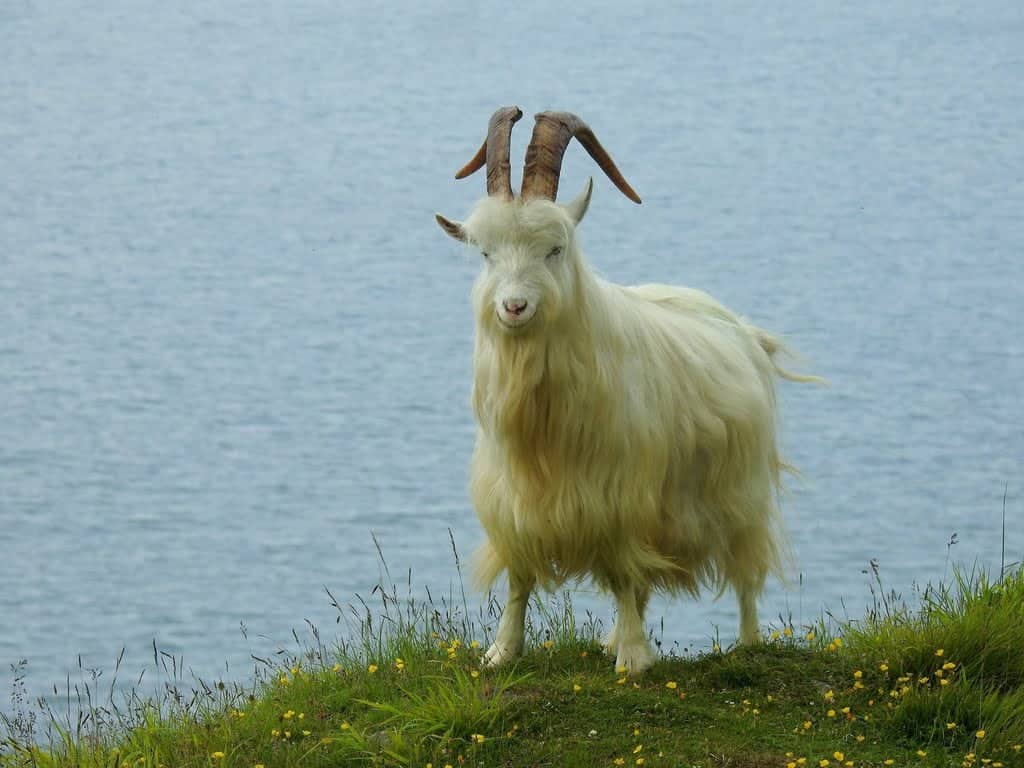
Description: The Xuhai Goat is a domestic breed native to China, well-known for its resilience and adaptability to various environmental conditions.
These goats typically stand about 2 to 3 feet tall at the shoulder and weigh between 100 to 150 pounds.
Their coats are usually short and can vary in color, ranging from white to brown or black. Xuhai goats are primarily kept for their milk and meat, making them a valuable resource in rural communities.
- Region of Habitat: Asia, primarily China
- Scientific Name: Capra hircus
- Place of Origin: China
- Feeding Habits: Herbivorous, grazing on grasses and shrubs
- What Sound They Make: Bleating
Fun Facts: Xuhai Goats are renowned for their ability to thrive in harsh conditions, including poor soil and rough terrain.
They have been bred for centuries to enhance their milk production, making them a crucial component of local economies.
Despite their sturdy appearance, these goats are known for their gentle and docile nature, making them easy to manage in herds.
3. Xestochilus Nebulosus (Genus)

Description: The Xestochilus Nebulosus is a charming eel-like fish in the Indo-Pacific Oceans.
These creatures can grow up to 3 feet long and have a slender, snake-like body covered in smooth, scaleless skin.
Their coloration typically includes shades of brown and green, helping them blend into their weedy ocean-floor habitats. Although they may appear intimidating, these fish are harmless to humans.
- Region of Habitat: Indo-Pacific Oceans
- Scientific Name: Xestochilus nebulosus
- Place of Origin: Indo-Pacific region
- Feeding Habits: Carnivorous, feeding on small fish and invertebrates
- What Sound They Make: Generally silent
Fun Facts: The Xestochilus Nebulosus uses its appearance to deter predators, mimicking the look of more dangerous creatures like snakes.
Despite their fearsome look, these fish are not aggressive and prefer to avoid confrontation. They are nocturnal hunters, often prowling the ocean floor at night to catch prey, making them elusive and rarely seen by divers.
4. Xiaotingia

Description: Xiaotingia is a small, feathered dinosaur that lived during the Late Jurassic period. It measured about 3 feet in length and weighed around 2 pounds.
Xiaotingia had a lightweight body, long arms, and a sharp, beak-like snout, suggesting it was a deft predator.
Its feathers were likely used for insulation and display, as evidence suggests it could glide or make short flights.
- Region of Habitat: Asia
- Scientific Name: Xiaotingia zhengi
- Place of Origin: China
- Feeding Habits: Carnivorous, feeding on insects and small animals
- What Sound They Make: High-pitched chirps or squawks (hypothetical)
Fun Facts: Xiaotingia is considered a significant discovery because it shares characteristics with birds and dinosaurs, providing crucial insights into the evolution of modern birds.
Its feathered limbs suggest it was capable of aerial locomotion, making it one of the earliest to experiment with flight.
This dinosaur’s discovery has helped paleontologists better understand the link between dinosaurs and birds.
5. Xantus Hummingbird

Description: The Xantus Hummingbird, also known as the Black-fronted Hummingbird, is a small, vibrant bird measuring 3 to 4 inches long.
It is characterized by its iridescent green and blue plumage, with a distinctive black stripe across its face.
This hummingbird’s long, slender beak is adapted for feeding on flower nectar. Despite its small size, it is known for its agility and rapid flight.
- Region of Habitat: Central and South America
- Scientific Name: Basilinna xantusii
- Place of Origin: Baja California Peninsula
- Feeding Habits: Nectarivorous, feeding on flower nectar and small insects
- What Sound They Make: High-pitched trills and chirps
Fun Facts: Xantus Hummingbirds are known for their incredible energy and speed. They can beat their wings up to 80 times per second, allowing them to hover in place while feeding on nectar.
These hummingbirds play a vital role in pollination, transferring pollen from one flower to another as they feed, which helps maintain the health of their ecosystems.
6. Xenarthra (Genus)
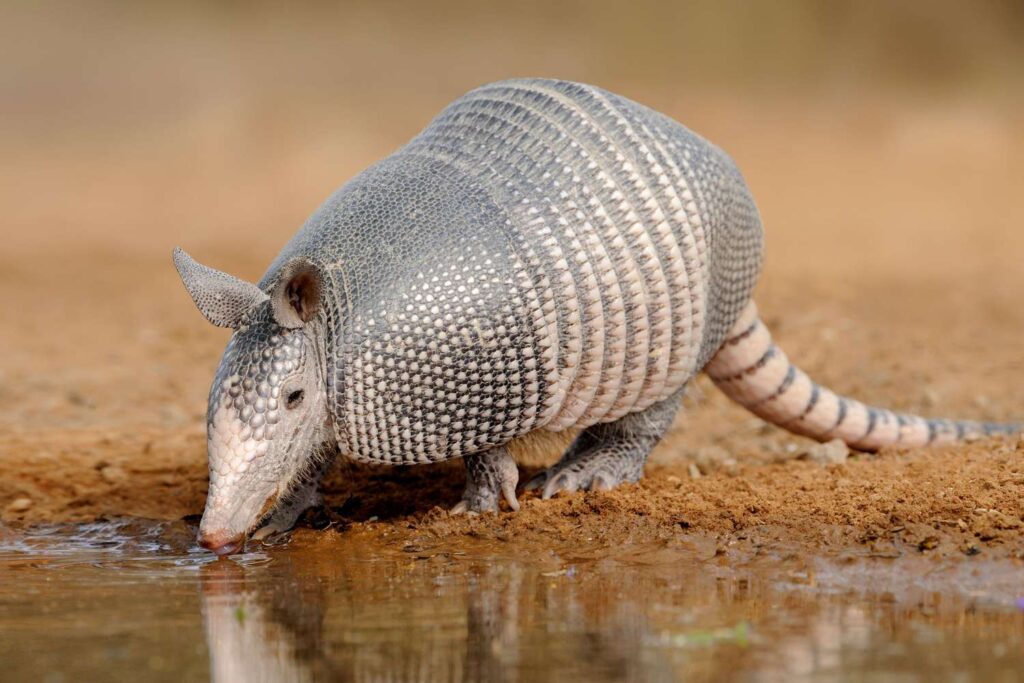
Description: Xenarthra is a superorder of placental mammals that includes armadillos, sloths, and anteaters.
These animals vary widely in size, from small, armored armadillos to slow-moving sloths and specialized, insect-eating anteaters.
Despite their differences, all Xenarthrans share unique joints in their spinal columns, contributing to their name, which means “strange joints.” They have low metabolic rates and are well-adapted to their respective habitats.
- Region of Habitat: North and South America
- Scientific Name: Superorder Xenarthra
- Place of Origin: South America
- Feeding Habits: Insectivorous (anteaters), herbivorous (sloths), omnivorous (armadillos)
- What Sound They Make: Varies by species: grunts, hisses, and quiet vocalizations.
Fun Facts: One of the most amusing features of Xenarthrans is their slow metabolism, particularly in sloths, which allows them to survive on a diet of low-energy leaves.
On the other hand, Armadillos are known for their ability to roll into a ball as a defensive mechanism.
Anteaters use their long tongues, which can extend up to 2 feet, to extract ants and termites from their nests.
7. Xavier’s Greenbul
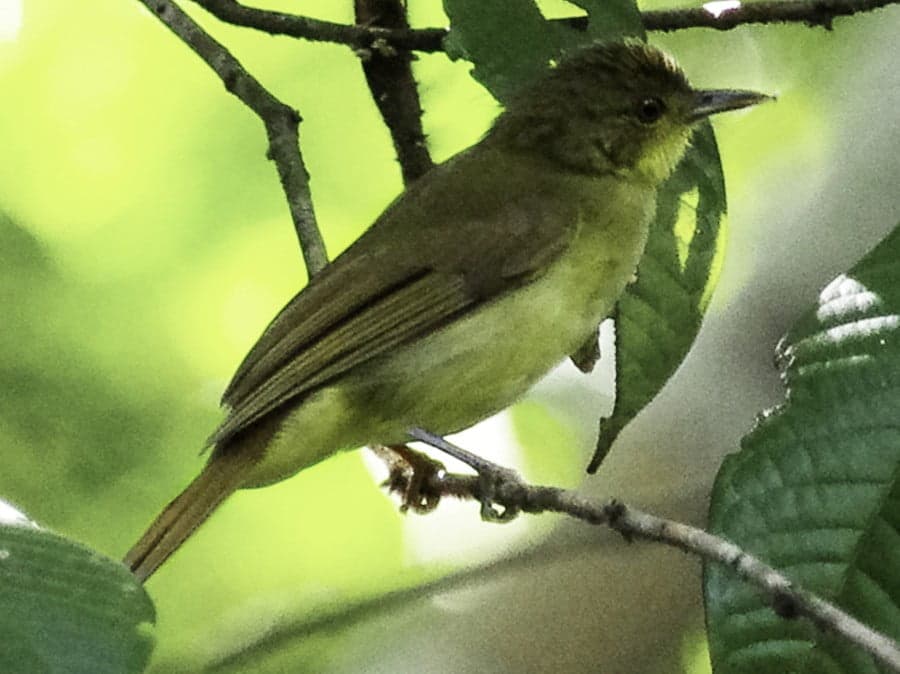
Description: Xavier’s Greenbul is a small bird with olive-green plumage and a distinctive yellowish underside. It measures about 6 to 7 inches and weighs around 0.8 to 1.2 ounces.
This bird is known for its active foraging behavior and is commonly found in dense forests, where it searches for insects among the foliage. Its eyes are large and dark, giving it a curious appearance.
- Region of Habitat: Mozambique Forests
- Scientific Name: Phyllastrephus xavieri
- Place of Origin: Mozambique
- Feeding Habits: Insectivorous, feeding on insects and ants
- What Sound They Make: Melodious songs with varied pitches
Fun Facts: Xavier’s Greenbul is often heard before it is seen, thanks to its musical and complex vocalizations.
These birds are important in controlling insect populations, particularly in agricultural areas.
Despite their small size, they are very active and spend most of their time foraging for food in the understory of forests, rarely venturing into open spaces.
8. Xinjiang Ground Jay

Description: The Xinjiang Ground Jay is a small, slender bird measuring 10 to 12 inches long.
It has a distinctive long tail and strong legs, which make it well-suited for its terrestrial lifestyle. Its feathers are primarily brown with lighter underparts, providing excellent camouflage in its arid habitat.
This bird is known for its curiosity and agility as it hops and runs along the ground for food.
- Region of Habitat: China
- Scientific Name: Podoces biddulphi
- Place of Origin: Xinjiang region, China
- Feeding Habits: Omnivorous, feeding on insects, seeds, and small reptiles
- What Sound They Make: Soft, whistling calls
Fun Facts: The Xinjiang Ground Jay is highly adapted to life in the desert, where it can survive with minimal water by extracting moisture from its food.
These birds are known for their intelligence and problem-solving abilities. They are often observed using sticks to extract insects from crevices.
Despite their small size, they are bold and curious, frequently exploring their surroundings.
9. Xantic Sargo
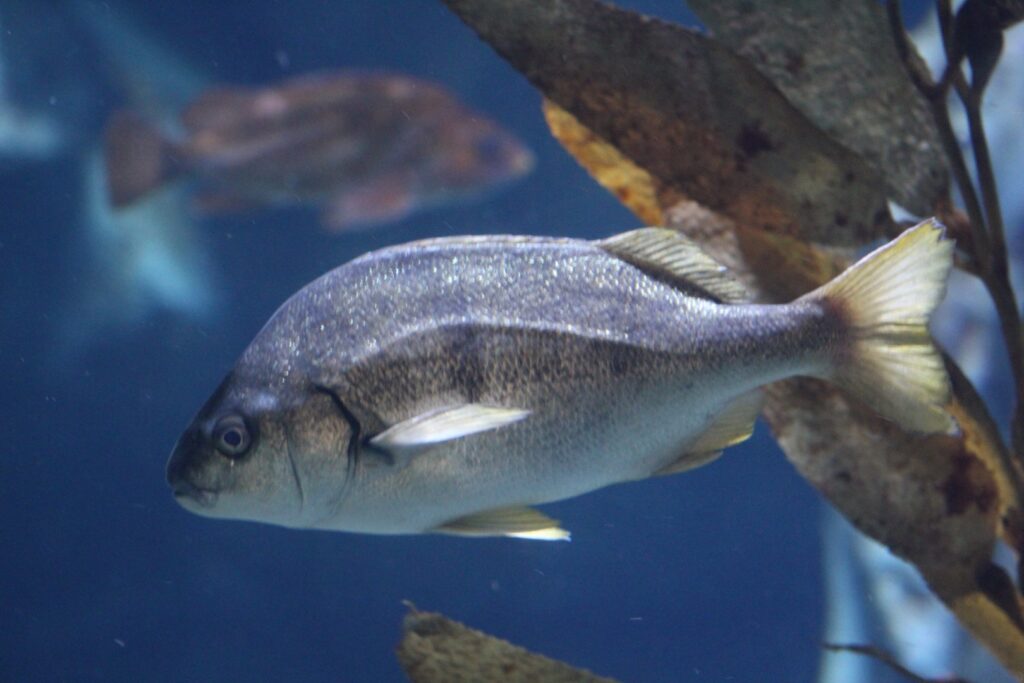
Description: The Xantic Sargo, also known as the California Sargo Fish, is a medium-sized fish that can grow up to 18 inches long and weigh around 2 to 3 pounds.
It has a sleek, silver body with faint vertical stripes running along its sides. This fish is commonly found in coastal waters and is known for its adaptability to different environments, from sandy bottoms to rocky reefs.
- Region of Habitat: Pacific Ocean, near the coast of California
- Scientific Name: Anisotremus davidsonii
- Place of Origin: Pacific Ocean, North America
- Feeding Habits: Omnivorous, feeding on algae, small invertebrates, and crustaceans
- What Sound They Make: Typically silent but may produce grunting when distressed.
Fun Facts: Xantic SargoFish are known for their social behavior. They often form small schools that patrol the reefs and sandy bottoms for food.
They are resilient creatures, capable of thriving in various conditions, which makes them a common sight for divers and fishermen alike.
This fish is also valued for its firm, white flesh, making it a popular catch in recreational fishing.
10. Xanthippe’s Shrew

Description: Xanthippe’s Shrew is a small mammal, typically measuring around 4 to 5 inches in length, including its tail, and weighing about 0.3 to 0.5 ounces.
It has a slender, pointed snout, tiny eyes, and soft, grayish-brown fur. This shrew is highly active, constantly foraging for food in the undergrowth of shrublands and forests.
Its small size and rapid movements make it a challenging creature to observe in the wild.
- Region of Habitat: Eastern Africa, including Tanzania and Kenya
- Scientific Name: Crocidura xantippe
- Place of Origin: Eastern Africa
- Feeding Habits: Insectivorous, feeding on insects, worms, and small invertebrates
- What Sound They Make: High-pitched squeaks
Fun Facts: Despite its tiny size, Xanthippe’s Shrew has a voracious appetite, consuming up to twice its body weight in food each day.
This is necessary to maintain its high metabolism. Shrews like Xanthippe are known for their aggressive hunting behavior, using their sharp teeth to capture and kill prey quickly.
They are solitary animals and are highly territorial, often engaging in fierce battles with other shrews.
11. Xysticus Cristatus (Genus)

Description: Xysticus is a genus of spiders commonly known as Ground Spiders. These small to medium spiders have a body length ranging from 0.2 to 0.6 inches.
They have mighty, crab-like bodies with short legs, usually brown or gray, allowing them to blend in with their surroundings.
Xysticus spiders are ambush predators, relying on camouflage and quick reflexes to capture prey.
- Region of Habitat: Europe and North America
- Scientific Name: Xysticus cristatus
- Place of Origin: Widespread across Europe and North America
- Feeding Habits: Insectivorous, feeding on insects and other small arthropods
- What Sound They Make: Silent
Fun Facts: Xysticus spiders are mesmerizing ambush predators that rely on stealth rather than webs to capture their prey.
They often hide under leaves, rocks, or other debris, waiting for unsuspecting insects to wander too close.
The spider quickly pounces when prey is within reach, delivering a nasty bite to subdue it. These spiders are important for controlling insect populations in their ecosystems.
12. Xylophagous Leafhopper
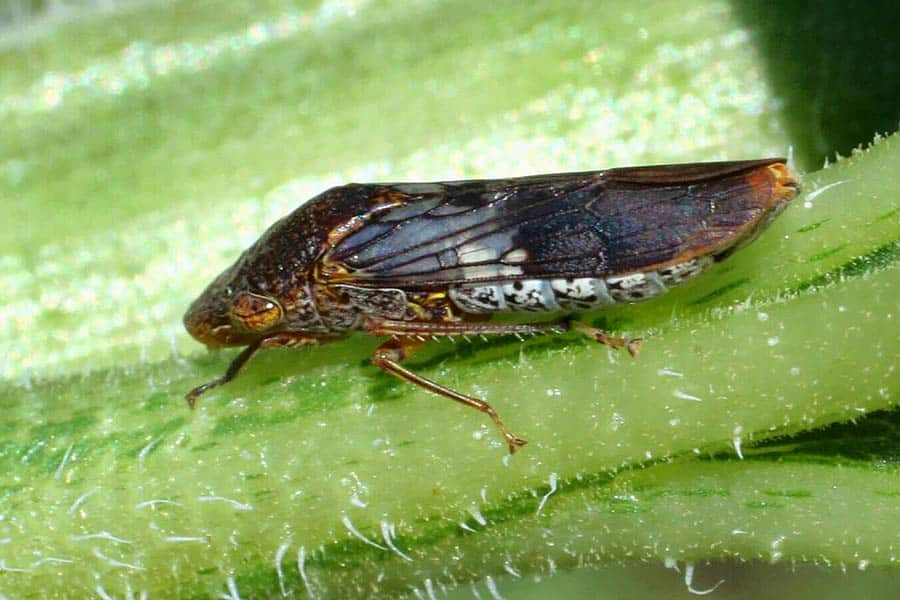
Description: The Xylophagous Leafhopper, or the Glassy-winged Sharpshooter, is a small insect measuring about 0.5 inches.
It has a slender, elongated body with transparent wings that appear glassy. This insect is primarily brown or green, with white spots along its wings.
It is known for its ability to jump long distances, making it a difficult target for predators.
- Region of Habitat: California, USA
- Scientific Name: Homalodisca vitripennis
- Place of Origin: Southeastern United States
- Feeding Habits: Herbivorous, feeding on plant sap
- What Sound They Make: High-pitched buzzing sounds
Fun Facts: The Xylophagous Leafhopper is a significant agricultural pest. It feeds on the sap of various plants, including grapevines and citrus trees.
Its feeding habits can spread plant diseases, making it a serious threat to crops. Despite its negative impact on agriculture, this insect is admired for its incredible jumping ability, which it uses to escape predators or move between plants.
13. Xenoceratops

Description: Xenoceratops was a large, horned dinosaur that roamed North America during the Late Cretaceous period.
It measured about 20 feet in length and weighed around 2 tons. Xenoceratops had a distinctive frill and large horns on their heads, likely used for defense and display.
Its bulky and powerful body was supported by strong limbs that allowed it to move efficiently through its environment.
- Region of Habitat: North America
- Scientific Name: Xenoceratops foremostensis
- Place of Origin: Canada
- Feeding Habits: Herbivorous, feeding on ferns, cycads, and other plants
- What Sound They Make: Low-pitched bellows or grunts (hypothetical)
Fun Facts: Xenoceratops is one of the oldest known horned dinosaurs discovered in Canada, providing valuable insights into the early evolution of ceratopsids.
Its large frill and horns were likely used to intimidate predators and compete with rivals during mating season.
The finding of Xenoceratops fossils has helped paleontologists better understand the diversity and distribution of horned dinosaurs in North America.
14. Xantus Murrelet

Description: The Xantus Murrelet, also known as the Guadalupe Murrelet, is a small seabird measuring about 10 inches long with a wingspan of around 18 inches.
It has black and white plumage, a dark back and head, and white underparts. This bird is well adapted to life at sea, with a streamlined body and strong wings that allow it to fly low over the water in search of food.
- Region of Habitat: Pacific Ocean, from California to Mexico
- Scientific Name: Synthliboramphus hypoleucus
- Place of Origin: Guadalupe Island, Mexico
- Feeding Habits: Piscivorous, feeding on small fish and plankton
- What Sound They Make: High-pitched whistles
Fun Facts: The Xantus Murrelet is one of the rarest seabirds in the world. Its population is restricted to a few islands off the coast of California and Mexico.
These birds are known for their nocturnal habits. They often come ashore only at night to nest in rocky crevices.
Despite their small size, Xantus Murrelets can travel long distances at sea, covering vast areas in search of food.
15. Xoloitzcuintli

Description: The Xoloitzcuintli, also known as the Mexican Hairless Dog, is an ancient breed that has been around for over 3,000 years.
These dogs come in three sizes: toy, miniature, and standard. The standard size typically weighs between 30 and 55 pounds.
Xolos have smooth, hairless skin that is often dark, although some individuals may have a sparse coat. Their bodies are lean and muscular, giving them a smart appearance.
- Region of Habitat: Mexico
- Scientific Name: Canis lupus familiaris
- Place of Origin: Mexico
- Feeding Habits: Omnivorous, eating a diet of meat, vegetables, and grains
- What Sound They Make: Barking, howling, and whining
Fun Facts: The Xoloitzcuintli is revered in Mexican culture, where it was once believed to guide the souls of the dead to the underworld.
These dogs are known for their intelligence and loyalty, making them excellent companions.
Despite their ancient origins, Xolos have become popular pets in modern times due to their unique appearance and hypoallergenic qualities, as they shed very little.
16. Xalda Sheep
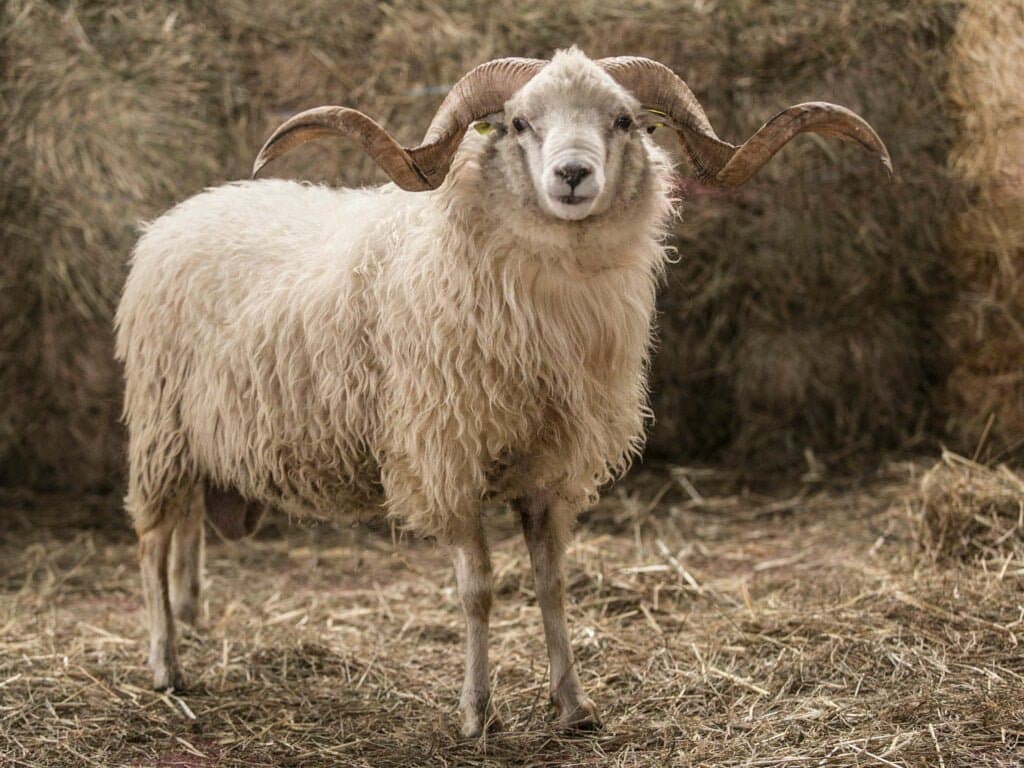
Description: Xalda Sheep is a traditional breed of sheep from the Asturias region in Spain. They are small to medium-sized animals with an average weight of 80 to 120 pounds.
These sheep are covered in coarse, dense wool that can be black, brown, or a mixture of both.
Xalda Sheep are hardy and well-adapted to the mountainous terrain of their native region, making them excellent foragers.
- Region of Habitat: Asturias, Spain
- Scientific Name: Ovis Aries
- Place of Origin: Asturias, Spain
- Feeding Habits: Herbivorous, grazing on grasses and herbs
- What Sound They Make: Bleating
Fun Facts: Xalda Sheep are one of the oldest sheep breeds in Spain, dating back to ancient times.
Their wool is highly valued for its warmth and durability, making it a sought-after material for traditional clothing and textiles.
In addition to their wool, Xalda Sheep are prized for their meat, considered a delicacy in the region. Their ability to thrive in harsh environments has made them an important part of Asturian agriculture.
17. Xuxaneb Robber Frog

Description: The Xuxaneb Robber Frog is a small amphibian, typically measuring 1 to 2 inches long.
Its smooth, moist skin is usually brown or green, and it has various patterns that help it blend into its forest habitat.
This frog is primarily nocturnal, emerging at night to hunt for insects. Despite its small size, the Xuxaneb Robber Frog is a fierce predator, using its sticky tongue to capture prey precisely.
- Region of Habitat: Guatemala
- Scientific Name: Craugastor xucanebensis
- Place of Origin: Guatemala
- Feeding Habits: Insectivorous, feeding on insects and other small invertebrates
- What Sound They Make: Soft, repetitive croaks
Fun Facts: Unlike most frogs, the Xuxaneb Robber Frog gives birth to live young rather than laying eggs.
This adaptation helps protect the offspring from predators and environmental hazards. These frogs are highly territorial and will aggressively defend their hunting grounds from other frogs.
Their populations are threatened by habitat loss due to deforestation, making conservation efforts crucial for their survival.
18. Xiphosura
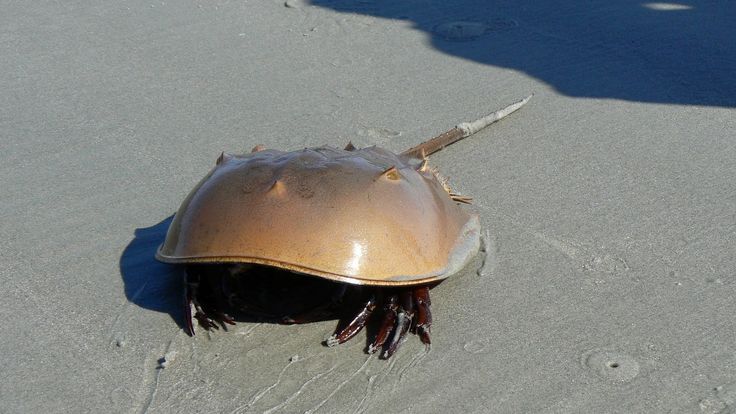
Description: Xiphosura, commonly known as Horseshoe Crabs, are ancient marine arthropods with a distinctive hard shell and long spiked tails.
They can grow up to 24 inches in length, including the tail, and weigh up to 10 pounds. Despite their name, they are more closely related to spiders and scorpions than crabs.
Xiphosura has a simple body structure with two main segments: the prosoma (head) and opisthosoma (body).
- Region of Habitat: Coastal regions of the Atlantic Ocean and the Gulf of Mexico
- Scientific Name: Limulus polyphemus
- Place of Origin: Atlantic Ocean
- Feeding Habits: Carnivorous, feeding on worms, clams, and small crustaceans
- What Sound They Make: Silent
Fun Facts: Horseshoe Crabs have existed for over 450 million years, making them one of the oldest living species on Earth.
Their blue blood contains a substance called Limulus amebocyte lysate (LAL), used in medicine to detect bacterial contamination in vaccines and medical devices.
Despite their ancient origins, Horseshoe Crabs still thrive today, playing a crucial role in coastal ecosystems.
19. Xeme

Description: The Xeme, or Sabine’s Gull, is a small, graceful seabird with a wingspan of about 30 inches and a weight of around 0.5 pounds.
It has a distinctive black head, white body, and gray wings with black tips. This bird is known for its long migrations, often traveling thousands of miles between its breeding and wintering grounds.
Xemes are skilled fliers capable of quick movements as they hunt for food over the ocean.
- Region of Habitat: Arctic regions, with wintering grounds in the Atlantic and Pacific Oceans
- Scientific Name: Xema sabini
- Place of Origin: High Arctic
- Feeding Habits: Carnivorous, feeding on fish, crustaceans, and insects
- What Sound They Make: High-pitched, rhythmic calls
Fun Facts: Xemes are unique among gulls in their preference for breeding in the high Arctic, where they nest on the ground in remote tundra landscapes.
During the non-breeding season, they migrate south to warmer coastal waters, often following seals and whales to scavenge scraps.
Birdwatchers prize sightings of Xemes, as their remote habitats and long migrations make them a rare find.
20. X-Ray Tetra

Description: The X-ray tetra is a small, translucent fish that typically measures about 1.5 to 2 inches long.
Its body is almost see-through, revealing its internal organs, which gives it the “X-ray” name. This fish has a silver sheen with yellow, black, and white markings on its fins.
X-ray tetras are schooling fish often seen swimming in groups. Due to their peaceful nature, they are popular in home aquariums.
- Region of Habitat: South America, primarily the Amazon River Basin
- Scientific Name: Pristella maxillaris
- Place of Origin: Amazon River Basin
- Feeding Habits: Omnivorous, feeding on insects, small crustaceans, and plant matter
- What Sound They Make: Silent
Fun Facts: X-ray tetras are alluring because they can blend into their environment, which helps them avoid predators.
Their transparent bodies make it difficult for larger fish to spot them in the water. These fish inhabit slow-moving rivers and streams in the wild, often hiding among plants and roots.
They are also known for their social behavior and prefer living in groups.
21. Xiaosaurus
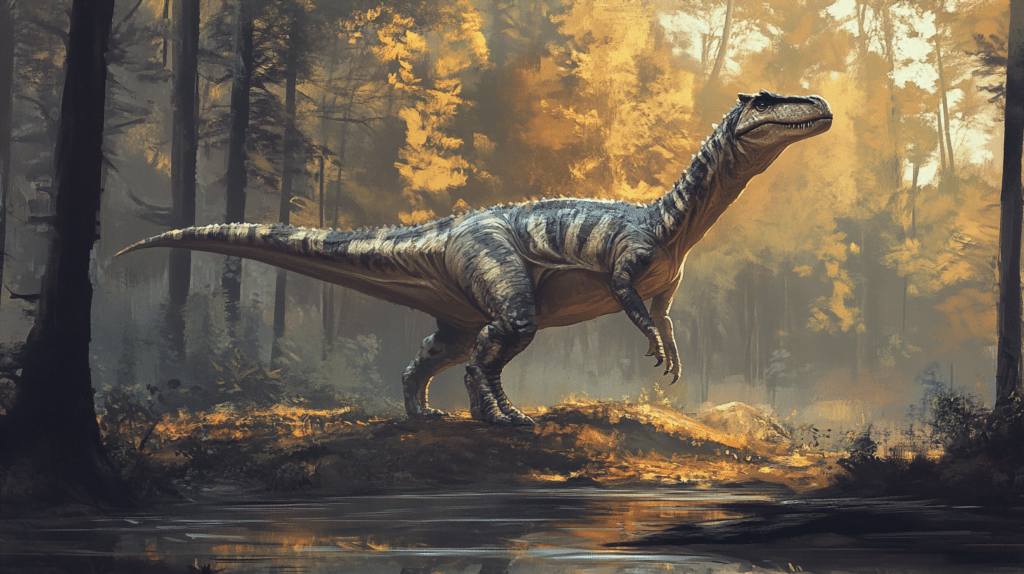
Description: Xiaosaurus was a small, bipedal dinosaur that lived during the Middle Jurassic period. It measured about 3 to 4 feet long and weighed around 15 pounds.
Xiaosaurus had a lightweight, quick body with long legs, which suggests it was a fast runner. Its head was small, with a beak-like mouth adapted for eating plants.
The body was covered in scales, typical of dinosaurs from this period.
- Region of Habitat: Asia
- Scientific Name: Xiaosaurus dashanpensis
- Place of Origin: China
- Feeding Habits: Herbivorous, feeding on ferns and other low-lying vegetation
- What Sound They Make: Hypothetical soft grunts or chirps
Fun Facts: Xiaosaurus is one of the lesser-known dinosaurs, with only a few fossil specimens discovered to date.
Despite this, it has provided valuable insights into the diversity of small herbivorous dinosaurs during the Jurassic period.
Its small size and agility would have helped it evade larger predators, making it a successful survivor in its ancient ecosystem.
22. Xantus Leaf-Toed Gecko

Description: The Xantus Leaf-Toed Gecko is a small lizard, typically measuring 2 to 3 inches long.
Its slender body has distinctive leaf-shaped toe pads that help it grip onto surfaces. This gecko’s skin is usually light brown or gray, with darker spots or stripes that provide camouflage against the bark of trees. It is primarily nocturnal, coming out at night to hunt for insects.
- Region of Habitat: Mexico and the southwestern United States
- Scientific Name: Phyllodactylus xanti
- Place of Origin: Mexico
- Feeding Habits: Insectivorous, feeding on insects and spiders
- What Sound They Make: Soft clicks and chirps
Fun Facts: Unlike many lizards, the Xantus Leaf-Toed Gecko lacks eyelids, so it cleans its eyes by licking them with its tongue.
This gecko is named after the Hungarian naturalist John Xantus, who discovered the species in the 19th century.
Its unique toe pads allow it to climb smooth surfaces, making it a skilled climber in its rocky desert habitat.
23. Xenacanthus

Description: Xenacanthus was a prehistoric freshwater shark that lived around 200 million years ago. It typically grew to about 3 to 6 feet long and had a slender, eel-like body.
Its most distinctive feature was a long, spine-like fin that ran along its back, likely protecting it against predators.
Xenacanthus had a broad, flat head with sharp teeth, and it was adapted for catching fish and other aquatic prey.
- Region of Habitat: Asia, Europe, North America, and Oceania
- Scientific Name: Xenacanthus decheni
- Place of Origin: Worldwide in freshwater environments
- Feeding Habits: Carnivorous, feeding on fish and small invertebrates
- What Sound They Make: Silent
Fun Facts: Xenacanthus is often called the “eel shark” due to its elongated body and unique appearance.
This shark was well adapted to life in freshwater rivers and lakes, unlike most modern sharks, which are marine.
Fossils of Xenacanthus have been found on multiple continents, indicating that it was widespread during its time. Its sharp teeth and powerful jaws made it a top predator in its ecosystem.
24. Xingu River Ray

Description: The Xingu River Ray is a freshwater stingray found exclusively in the Xingu River in Brazil.
It can grow up to 18 inches in diameter and has a round, flattened body with a long, whip-like tail.
The ray’s dorsal surface is dark with white or yellow spots, which provides camouflage against the riverbed. The tail is equipped with venomous barbs, which protect the ray against predators.
- Region of Habitat: Xingu River, Brazil
- Scientific Name: Potamotrygon leopoldi
- Place of Origin: Xingu River Basin, Brazil
- Feeding Habits: Carnivorous, feeding on fish, crustaceans, and mollusks
- What Sound They Make: Silent
Fun Facts: The Xingu River Ray is highly specialized to its environment, with a flat body that allows it to glide effortlessly along the riverbed in search of food.
Its venomous tail barb is a formidable defense mechanism, capable of delivering a painful sting to potential threats.
These rays are popular in the aquarium trade due to their striking appearance, but they require specific conditions to thrive in captivity.
25. Xenops Minutus (Genus)
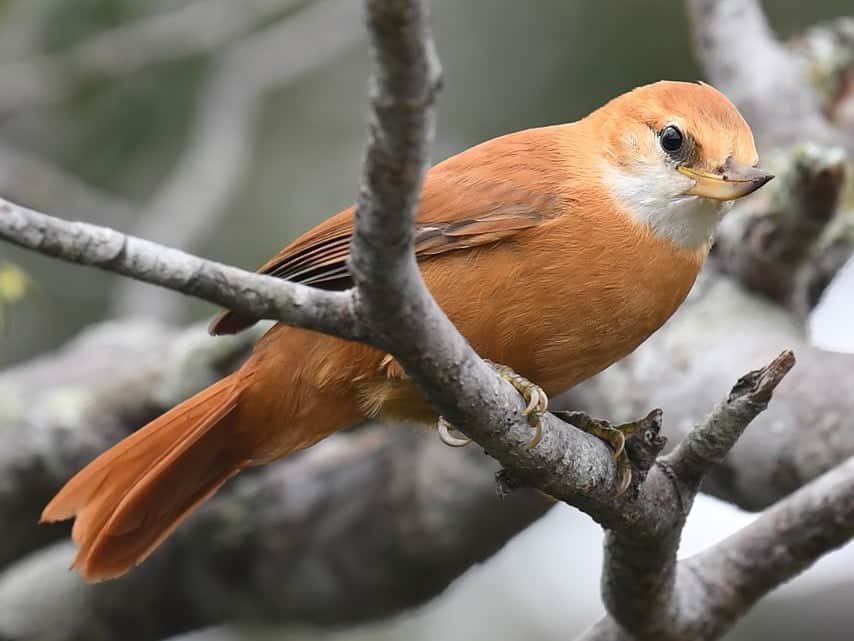
Description: Xenops is a small, plain-looking bird found in tropical forests. It measures about 5 to 6 inches in length and has brownish plumage with streaks of lighter color.
Despite its bland appearance, Xenops is an active and quick-moving bird. It is often seen clinging to tree trunks as it searches for insects.
Its short, stout bill is adapted for prying insects out of crevices in the bark.
- Region of Habitat: Central and South America
- Scientific Name: Xenops minutus
- Place of Origin: Central and South America
- Feeding Habits: Insectivorous, feeding on ants, beetles, and other insects
- What Sound They Make: High-pitched, repetitive calls
Fun Facts: Xenops are known for their unique foraging behavior, often working their way up and down tree trunks in search of food.
Xenops are solitary birds rarely seen in flocks. They are crucial in controlling insect populations in their habitats, particularly in tropical forests where insects can be abundant. Despite their small size, they are fearless and persistent hunters.
26. Xuthus Swallowtail

Description: The Xuthus Swallowtail is a large, striking butterfly with a wingspan of up to 4 inches. Its wings are primarily yellow with black stripes, and the hindwings have characteristic “swallowtails” – long, pointed extensions.
This butterfly is commonly found in woodland areas and gardens, feeding on nectar from various flowers. The body is black with white spots, adding to its distinctive appearance.
- Region of Habitat: Asia
- Scientific Name: Papilio xuthus
- Place of Origin: Asia
- Feeding Habits: Nectarivorous, feeding on flower nectar
- What Sound They Make: Silent
Fun Facts: The Xuthus Swallowtail is known for its graceful flight and vivid coloration, making it a favorite among butterfly enthusiasts.
Its caterpillars feed on citrus plants, which can make them a pest in some areas, but they are also admired for their unique, snake-like appearance, which helps deter predators.
Adult butterflies are important pollinators, contributing to the health of their ecosystems.
27. Xenoposeidon

Description: Xenoposeidon was a large, long-necked dinosaur that lived during the Early Cretaceous period.
It measured approximately 60 feet in length and weighed up to 10 tons. This dinosaur had a massive, elongated body with a long tail and a neck that could reach high into the trees.
Its vertebrae were uniquely structured, giving it greater flexibility than other sauropods.
- Region of Habitat: Europe
- Scientific Name: Xenoposeidon proneneukos
- Place of Origin: UnitedKingdom
- Feeding Habits: Herbivorous, feeding on tree leaves and vegetation
- What Sound They Make: Hypothetical deep bellows or grunts
Fun Facts: Xenoposeidon is known primarily from a single vertebra discovered in the UK, which has sparked much debate among paleontologists about its classification.
The unique features of this vertebra suggest that Xenoposeidon may have been unlike any other known sauropod, possibly representing a new family of dinosaurs.
Its ability to reach high vegetation would have made it one of the dominant herbivores in its environment.
28. Xiphactinus

Description: Xiphactinus was a large, predatory fish that lived during the Late Cretaceous period. It could grow up to 20 feet long and had a strong, torpedo-shaped body.
Xiphactinus had a large mouth filled with sharp, needle-like teeth, making it a formidable predator in its marine environment.
Its body was covered in thick, bony scales that protected other predators.
- Region of Habitat: North America
- Scientific Name: Xiphactinus audax
- Place of Origin: Western Interior Seaway, North America
- Feeding Habits: Carnivorous, feeding on smaller fish and marine reptiles
- What Sound They Make: Silent
Fun Facts: Xiphactinus was one of the largest bony fish ever to exist, and its fossils have been found with the remains of entire prey animals in its stomach, indicating it swallowed its food whole.
This fish was a top predator in the ancient seas, and its formidable size and speed made it a fearsome hunter.
The finding of well-preserved Xiphactinus fossils has provided valuable insights into the marine ecosystems of the Cretaceous period.
29. Xenurus Unicinctus

Description: The Southern Naked-tailed Armadillo, or Xenurus Unicinctus, is a small armadillo species native to South America.
It measures about 14 to 20 inches, with a tail that adds another 6 to 8 inches. Unlike other armadillos, its tail has very little armor.
Hence the name “naked-tailed.” Its body is covered in tough, bony plates that protect it from predators and has strong claws for digging.
- Region of Habitat: South America
- Scientific Name: Cabassous unicinctus
- Place of Origin: South America
- Feeding Habits: Insectivorous, feeding on ants, termites, and other small invertebrates
- What Sound They Make: Grunts and hisses
Fun Facts: The Southern Naked-tailed Armadillo is an expert digger, capable of burrowing quickly to escape predators or to find food.
It spends much of its time underground, emerging mainly at night to forage. Despite its armor, this armadillo is alert and can curl into a ball to protect its vulnerable underbelly when threatened. Its diet of ants and termites helps control insect populations in its habitat.
30. Xylocopa Violacea (Genus)

Description: Xylocopa, commonly known as Carpenter Bees, are large, solitary bees growing up to 1 inch long.
They have mighty, shiny black bodies with sparse hair and powerful mandibles that they use to burrow into wood.
Despite their intimidating size, Carpenter Bees are generally non-aggressive and are important pollinators. Males have a distinctive yellow face, while females are entirely black.
- Region of Habitat: India, primarily Punjab and Jammu Kashmir
- Scientific Name: Xylocopa violacea
- Place of Origin: India
- Feeding Habits: Nectarivorous, feeding on flower nectar
- What Sound They Make: Loud buzzing
Fun Facts: Carpenter Bees are named for their habit of boring holes into wood to create nests. They are crucial in pollination, particularly for certain crops and wildflowers.
While solitary, females sometimes share a nest with their offspring or other females. Despite their habit of tunneling into wood, they are not considered major pests, as they prefer untreated and unpainted wood.
31. Xenosaurus Newmanorum (Genus)

Description: Xenosaurus Newmanorum is a small, secretive lizard found in the mountainous regions of Mexico.
It measures about 4 to 6 inches long and has a flattened body with rough, bumpy skin that helps it blend into rocky environments.
This lizard is primarily nocturnal and spends much of its time hiding in crevices or under rocks, emerging at night to hunt for insects.
- Region of Habitat: Mexico
- Scientific Name: Xenosaurus newmanorum
- Place of Origin: Mexico
- Feeding Habits: Insectivorous, feeding on insects and spiders
- What Sound They Make: Silent
Fun Facts: Xenosaurus Newmanorum is one of the few lizards that give birth to live young rather than laying eggs, a trait that helps increase the survival rate of their offspring.
These lizards are secretive and rarely seen, even in their native habitats. Their ability to blend into their surroundings makes them effective ambush predators, waiting for prey to come close before striking.
32. Xolocalca Bromeliad Salamander
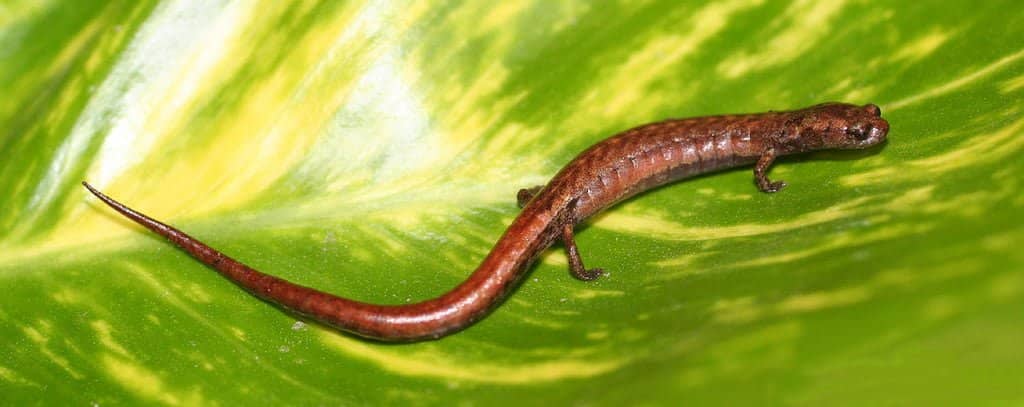
Description: The Xolocalca Bromeliad Salamander is a small, arboreal amphibian found in the cloud forests of Mexico.
It measures about 2 to 3 inches long and has a slender body with long, soft limbs. The skin is smooth and moist, usually in shades of brown or green, with a distinctive triangular mark on the head.
These salamanders are adapted to life in the canopy, where they live among the bromeliads.
- Region of Habitat: Mexico
- Scientific Name: Dendrotriton xolocalcae
- Place of Origin: Mexico
- Feeding Habits: Insectivorous, feeding on small insects and invertebrates
- What Sound They Make: Silent
Fun Facts: Unlike many salamanders, the Xolocalca Bromeliad Salamander does not lay eggs in water but gives birth to live young, a rare trait among amphibians.
This adaptation suits their arboreal lifestyle, where standing water may be scarce. These salamanders are highly sensitive to environmental changes, making them important indicators of ecosystem health in their native cloud forests.
33. Xiphias Gladius (Genus)

Description: The Swordfish, or Xiphias Gladius, is a large, powerful fish that can grow up to 14 feet in length and weigh over 1,000 pounds.
Swordfish are easily recognized by their long, flat bill, or “sword,” which they use to slash at prey.
Swordfish are apex predators in their marine environment. Their sleek and muscular bodies are designed for speed, with a dark blue upper body and a lighter underside.
- Region of Habitat: Atlantic and Pacific Oceans
- Scientific Name: Xiphias gladius
- Place of Origin: Global, primarily in tropical and temperate oceans
- Feeding Habits: Carnivorous, feeding on squid, fish, and crustaceans
- What Sound They Make: Silent
Fun Facts: Swordfish are among the fastest fish in the ocean, capable of swimming up to 60 miles per hour.
Their long, sharp bill stuns prey, making it easier to catch. Female Swordfish are typically larger than males, and they can produce millions of eggs in a single spawning season.
Despite their formidable size and power, Swordfish are highly sought after by commercial and recreational fishermen.
Final Words
As we summarise our trip through the world of animals that start with X, it’s clear how varied and remarkable these creatures are.
Each animal plays a unique role in its ecosystem, from the tiny X-ray tetra to the prehistoric xenacanthus.
Our exploration has shown that X-named animals can be found in diverse habitats across the globe.
Some, like the Xingu River ray, face challenges due to changing environments, while others, like the Xoloitzcuintli, have adapted to life alongside humans.
Learning about these animals deepens our appreciation for the natural world’s complexity.
Whether you’re a wildlife enthusiast or simply curious, we hope this guide has sparked your interest in these charming creatures.
Next time you encounter an animal that starts with X, you’ll have a new perspective on its place in nature.




